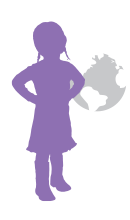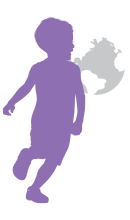Component 2: Economics
Standard 2.a: Children demonstrate increasing knowledge of basic economic concepts such as supply and demand, occupations, and currency.
By the following age ranges, children typically, for example:

- Experience basic supply and demand, such as an abundance of or limited access to a resource (e.g., squealing in excitement when a lot of balls are poured out, crying when they are unable to reach a toy)

- Engage with materials that represent different occupations from what they see in their environment (e.g., push a firetruck and make the noise of a siren, help get the mail from the mailbox)
- Begin to engage in principles of economic exchange through trade (e.g., offer another toy to get another child to drop a toy they want)

- Identify occupations familiar people have (e.g., put on a hardhat to build in the block center)
- Demonstrate greater understanding of supply and demand (e.g., rush to get limited playground materials once outside)

- Express understanding of occupations (e.g., pointing out the workers in the sanitation truck or pretending, “Let’s cook some food for our restaurant”)
- Show a beginning understanding of the purpose of money to get a desired object (e.g., draw a picture of themselves wearing red shoes and communicate that “on payday I get new shoes”

- Communicate the roles and purposes of several occupations, especially those the child is familiar with (e.g., communicate that “firemen are our helpers— they put out fires, and they helped my grandma when she fell down”)
- Demonstrate awareness of the relationship between jobs, money, and its exchange (e.g., play store in dramatic play where play money is exchanged for a good)
- Explore ways people have to meet their needs (e.g., helping in the community garden, pretending to grocery shop)

